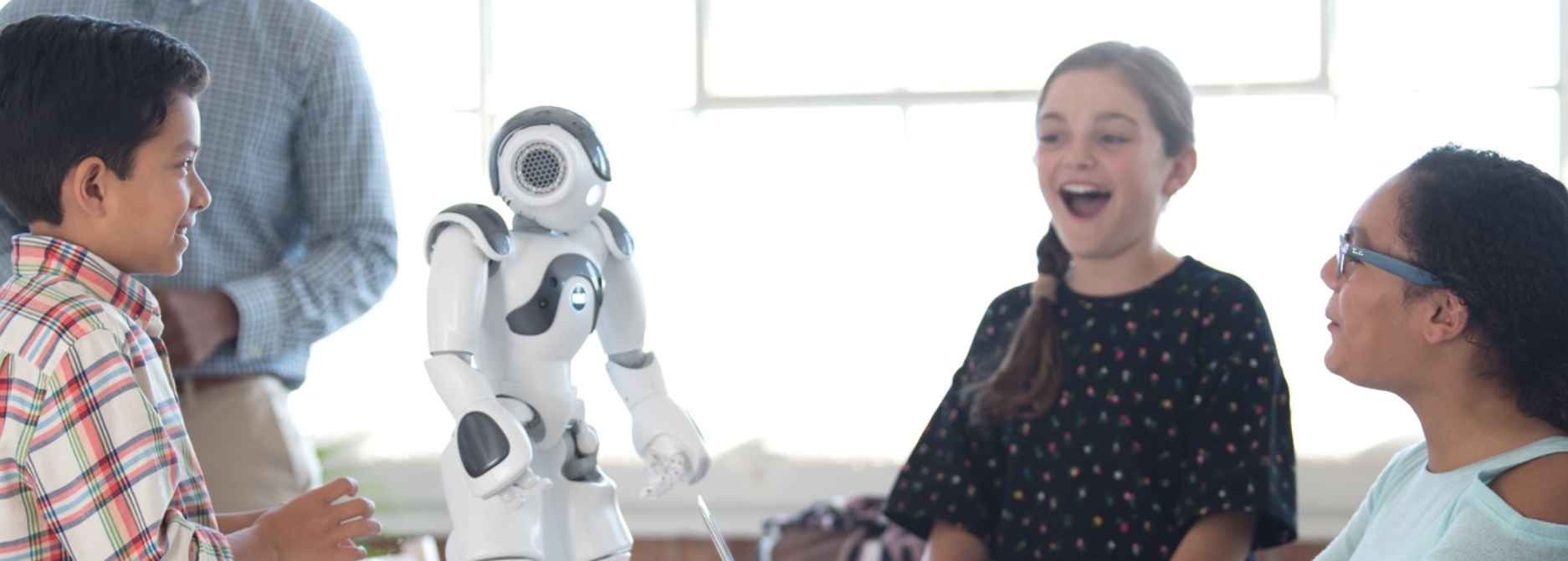By Dan Matthews
 Image Source: www.unsplash.com
Image Source: www.unsplash.com
The marriage between health science and technology has been a long and happy one. However, that union has perhaps never been more important than it is today. Now, more than ever, state-of-the-art technologies, from bioengineering to artificial intelligence (AI), are playing a leading role in optimizing patient care, supporting healthcare providers, and expanding the scope of medical knowledge.
Among the most significant and promising of these technologies in the domain of health, sciences are robotics.
These technologies are not only increasingly being used in clinics, hospitals, and operating rooms, but also in health sciences classrooms at every level, including primary, secondary, and post-secondary education. This article explores the reasons why you should begin integrating robotics into your health sciences courses and identifies key strategies for doing so.
The Role of Robotics in Healthcare
One of the most important reasons for integrating robotics into health sciences education is simply that doing so will prepare students interested in a career in the healthcare sector for the work ahead. Robotics are increasingly being utilized across all domains of health science.
This includes, for instance, their use in highly delicate surgeries that may require greater stamina or physical dexterity than even the most skilled and highly trained surgeon is capable of. Indeed, there is mounting evidence that robotics used in direct patient care, including surgical and other invasive procedures, generally experience better outcomes than those who are treated exclusively by human practitioners.
Patient care is far from the only arena in which robotics are proving beneficial. For example, robots are becoming ubiquitous in pharmaceutical manufacturing. These machines enable the production of essential medicines at faster rates and lower costs than traditional manufacturing processes, and with a lower risk of manufacturing errors. The result is a plentiful and higher quality product at a less burdensome cost to health systems and patients.
Given that robotics is likely to play an ever-more integral role in health sciences in the years and decades to come, familiarizing your students with these technologies early on can be a wonderful way to prepare them for future success, no matter what their particular area of interest.
Robotics as a Tool for Health Literacy
Health literacy is an essential competency for students, healthcare providers, medical researchers, and patients alike. Unfortunately, it’s also a competency that few adults, particularly those who are not trained in the health sciences, possess.
In essence, health literacy refers to the capacity to locate, evaluate, understand, and use relevant health information. This also includes the ability to differentiate between credible, non-credible, and dubious health information and sources.
Traditionally, health literacy has been cultivated through fairly standard channels, including print and broadcast media, digital media, and direct education, whether in schools, offices, communities, or clinics.
Today, however, robotics may be used in a novel way to teach health literacy not only to patients but also to aspiring health workers.
For example, robotics may be used in secondary health science courses to assess the veracity of health information the students may locate through external sources, such as online databases. Therapeutics and procedures may be attempted on robotic “patients,” which would be programmed to simulate physiological responses to these interventions.
Not only can working with robotics help future researchers and healthcare providers become savvier in their consumption and application of health information, but this can also help them experience first-hand the most effective strategies for cultivating health literacy. This experience may then be passed on in their future work, preparing them to deploy innovative technologies such as these to support patient and public health education.
Cultivating Ethical Responsibility
Another important benefit of integrating robotics into the health sciences classroom is that it provides a forum for students to consider and respond to the ethical implications of the use of such technology in medical research and practice.
For example, robotics and AI often go hand-in-hand. Introducing AI-driven robots into the health sciences classroom also inevitably introduces opportunities for the critical exploration of ethical issues inherent in the use of intelligent machines in healthcare.
Students may be tasked, for example, with examining the response of AI robots to hypothetical patient care scenarios and contrasting those with their own decisions. Cultivating students’ abilities to critically assess and address the moral and ethical implications of AI-driven healthcare is imperative if the promise of these technologies for enhancing patient care is to be fully realized.
Robotics as a Coping Tool
There’s no question that the STEM classroom can be a formidably challenging environment for students, both intellectually and emotionally. Robots in health sciences courses can be used to mitigate some of the stress and anxiety students may feel when tackling such difficult curricula.
Research has shown, for instance, that distraction can be a very effective approach for managing stress. Working with and learning from robots can be ideal for STEM students, providing a much-needed form of distraction.
They’re able to engage with the technology in a fun and non-threatening way, allowing them to learn, solve problems, and take risks without the fear of judgment or harm. The robot, after all, won’t laugh at them if they make a “mistake.” It won’t give them a failing grade. It also won’t be hurt as a living patient could be.
The Takeaway
Integrating robotics into health sciences courses is an ideal way to prepare students of any age for a career in healthcare. No matter what the student’s particular area of interest, robotics in the classroom can familiarize students with the technologies they will need to master as professionals.
They can provide a forum for cultivating and promoting health literacy and examining moral and ethical issues surrounding healthcare and tech. Robotics can even provide a reassuring distraction that can help STEM students manage stress and learn difficult material in a non-threatening manner.
Learn more about Robots Integration with RobotLAB!
K12 students will graduate into a workforce that’s rife with technology in an era where robots and AI will become widely used in our everyday lives. RobotLAB is committed to bringing this technology to the students and enhancing their experience with tools that truly bring learning to life.

